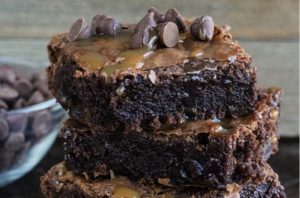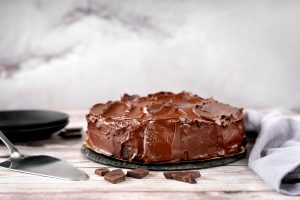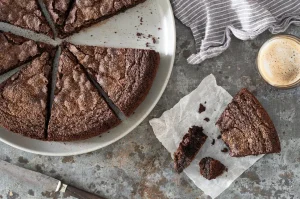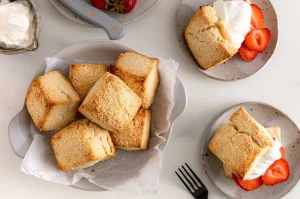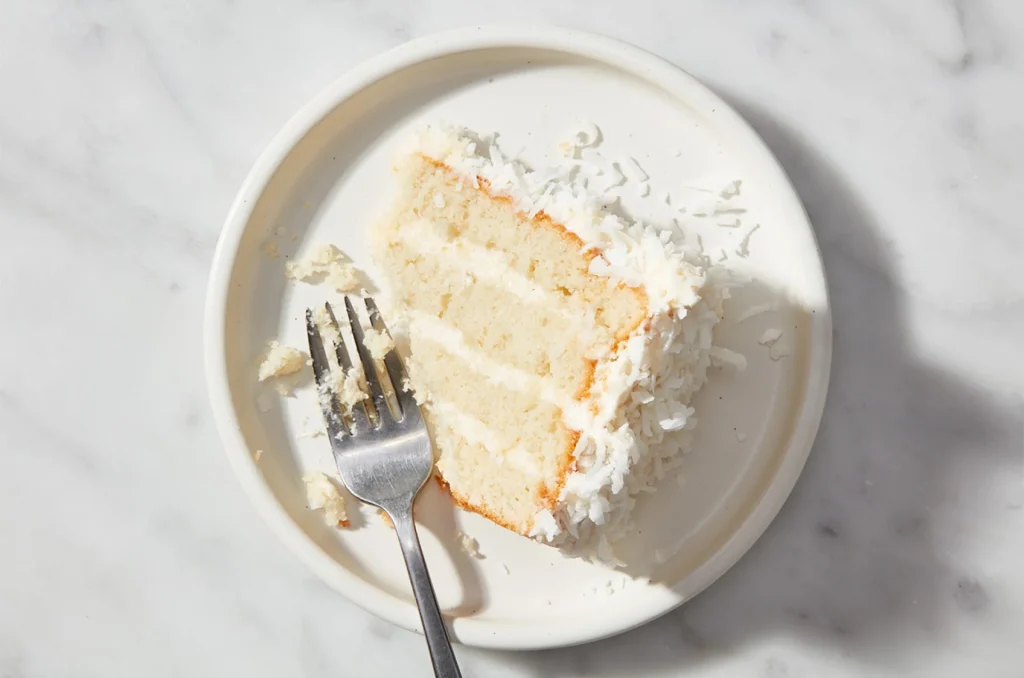“I want to make a recipe that calls for cake flour, but all I have is all-purpose flour. Can I substitute all-purpose for cake flour?”
If you’ve ever asked this question — to yourself or a friend — you’re not alone. Sometimes we just don’t have the flour a recipe calls for (and can’t bear another trip to the store), or maybe the store was out of stock. So how much does flour choice affect your baking?
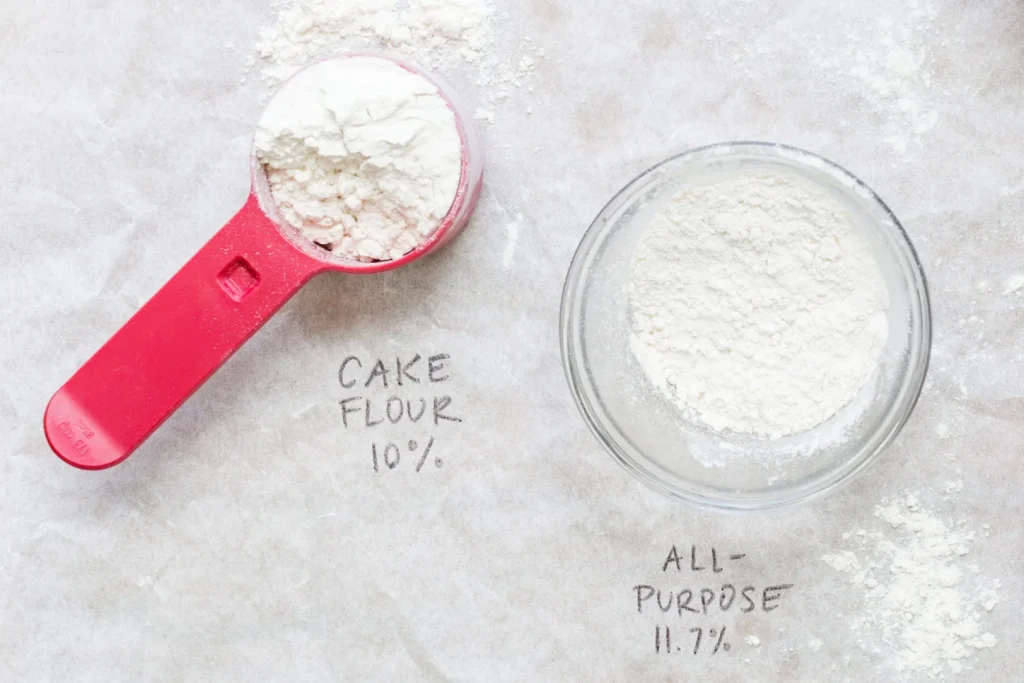
The difference between cake flour and all-purpose flour
First, it helps to understand the difference between cake flour and all-purpose flour.
It all comes down to protein content. Every type of flour has a protein percentage, which reflects how much gluten-forming protein it contains. Because protein level correlates with gluten-forming potential, it’s helpful to think of it this way: the higher the protein content, the “stronger” the flour.
When making baked goods like bread, using a strong flour with high protein makes sense. The robust glutinous web that develops when the flour is combined with liquid results in bread with chewy, bouncy texture. But when making a cake, it’s the opposite: We want something with a soft, fine, and tender crumb. In order to get it, we want to discourage gluten development, and one way to do that is to choose a flour with a lower protein content (the other is to avoid overmixing, which further develops gluten, even if you are using cake flour).
Our unbleached cake flour has a protein content of 10%, while all-purpose flour has a protein content of 11.7%. The lower protein content in cake flour means it has less gluten-forming potential, making it better suited to cakes.
(And it’s not just for cake! Our Test Kitchen uses lower-protein cake flour to achieve a melt-in-your-mouth texture in cookies like these Fiori Thumbprint Meltaway Cookies, while these Lemon Sugar Crunch Buns include cake flour for a delicate crumb.)
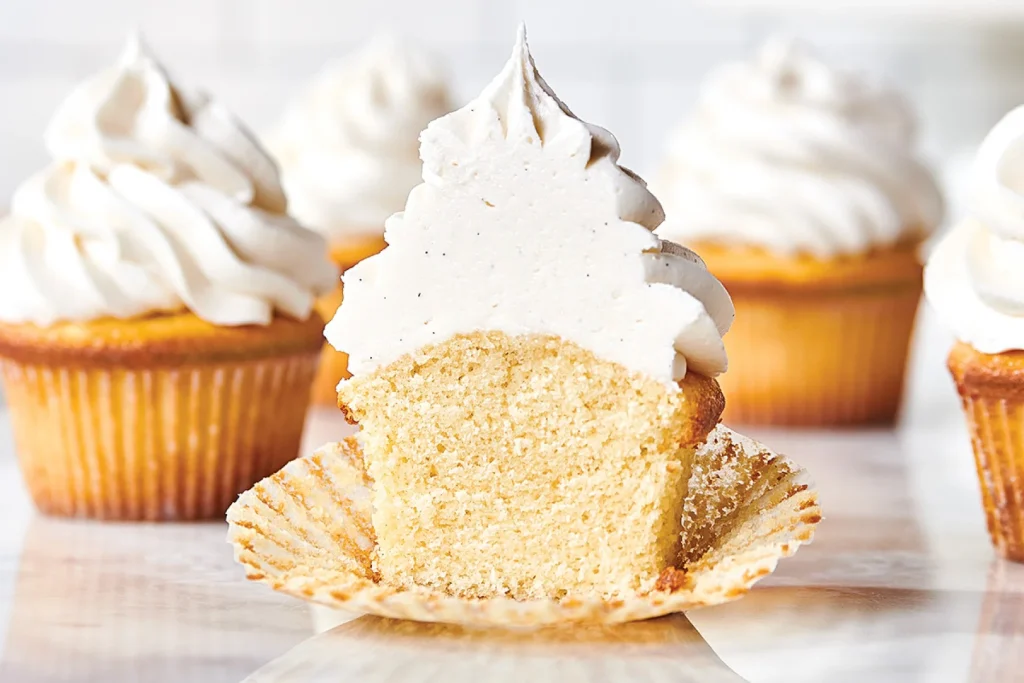
How to substitute for cake flour
You can make your own cake flour substitute by combining all-purpose flour with a little bit of cornstarch. The cornstarch adds tenderness and lowers the overall protein content of the mixture to mimic that of cake flour.
How to make cake flour : Whisk together 3/4 cup + 2 tablespoons (105g) all-purpose flour and 2 tablespoons (14g) cornstarch. Use in place of cake flour in a recipe, substituting by equal weight or volume.
Can I substitute cake flour for all-purpose flour?
While it’s usually fine to substitute all-purpose flour for cake flour, the opposite isn’t true. “For those bakers out there thinking ‘flour is flour’ — no, it’s really not!” says Molly. She explains, “Subbing cake flour 1:1 into a recipe that was developed for all-purpose flour might result in sunken cake or bars, or cookies that are too delicate or simply fall apart.” That’s because the lower protein content in cake flour may not develop enough gluten or structure to support a baked good meant to be made with all-purpose flour.
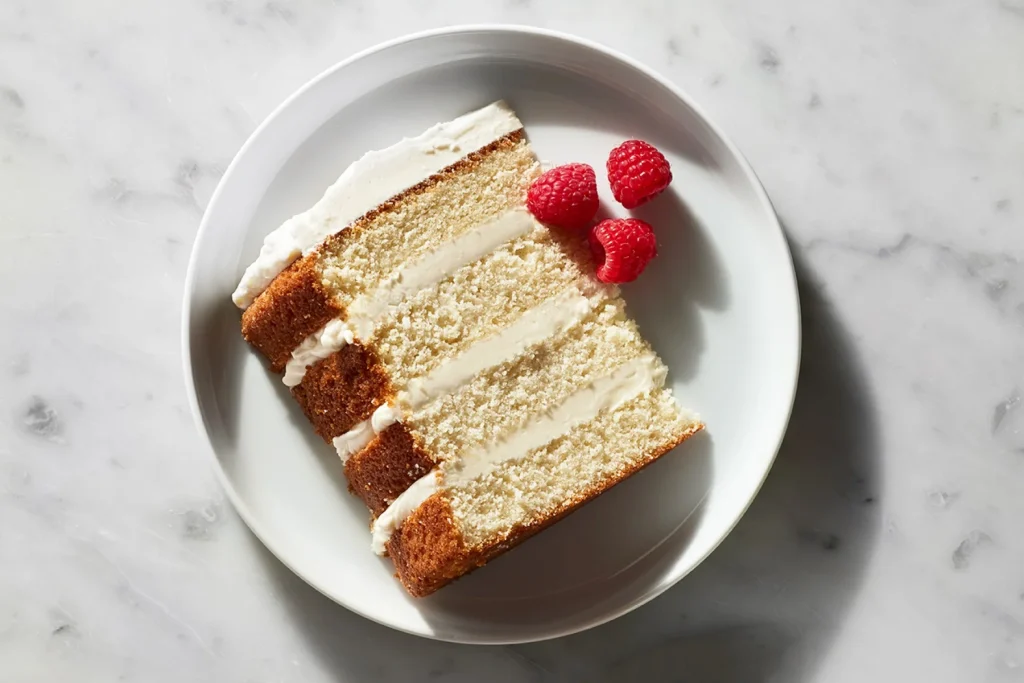
To live up to its name, Tender White Cake is made with cake flour.
Start baking with cake flour
Ready to bake great cake? Pick up a box of cake flour and make some of our favorite cake flour recipes:
